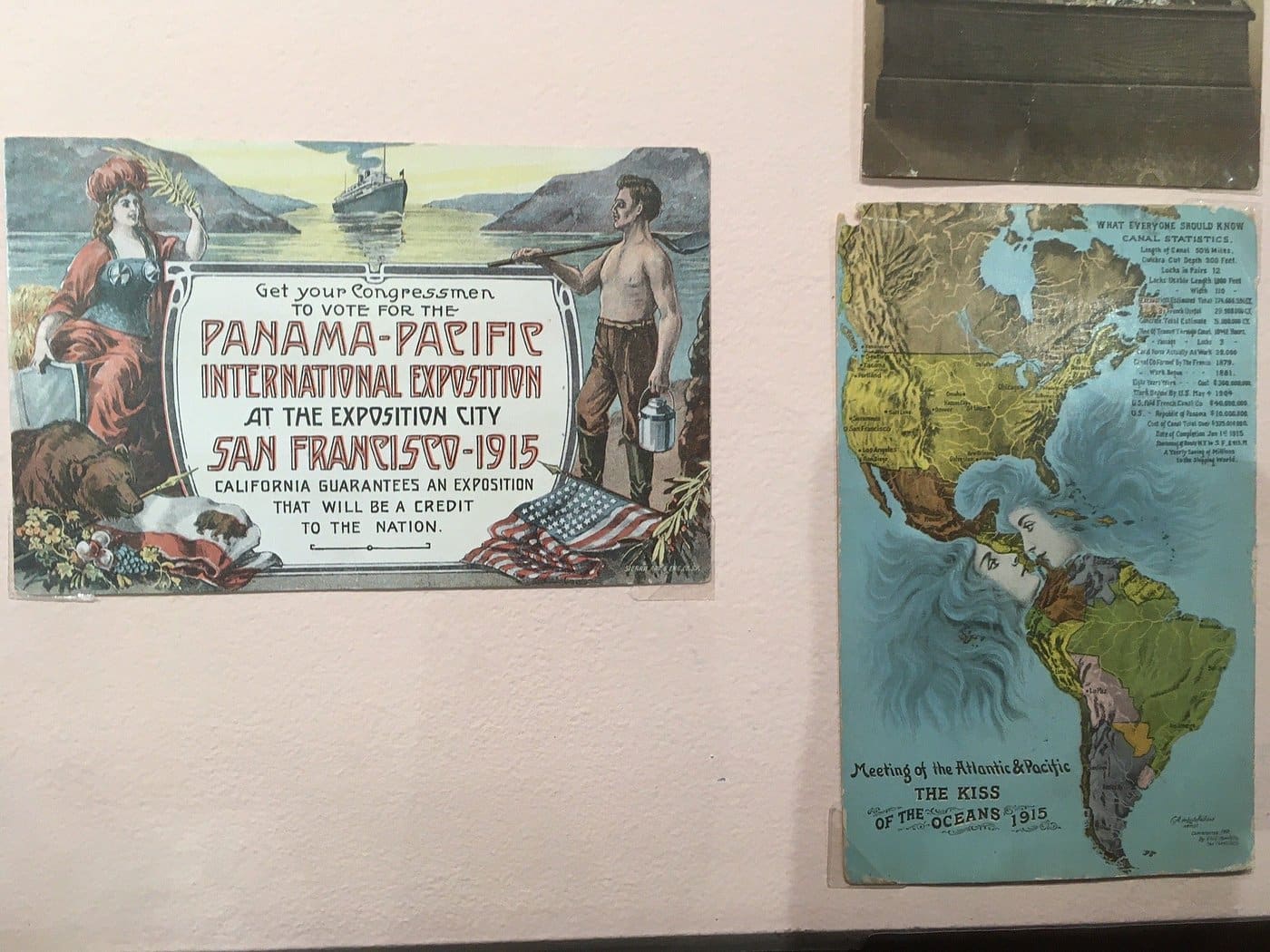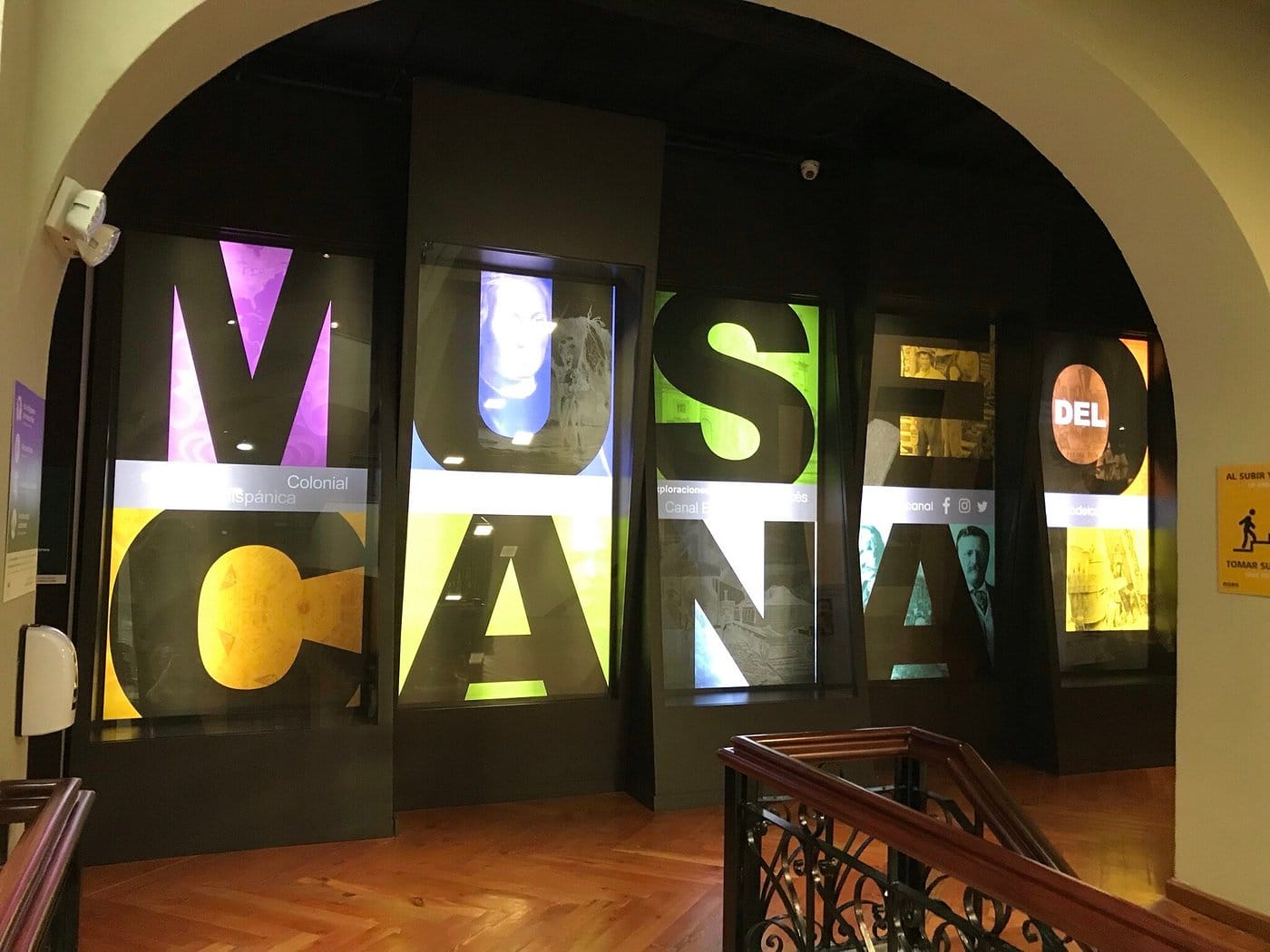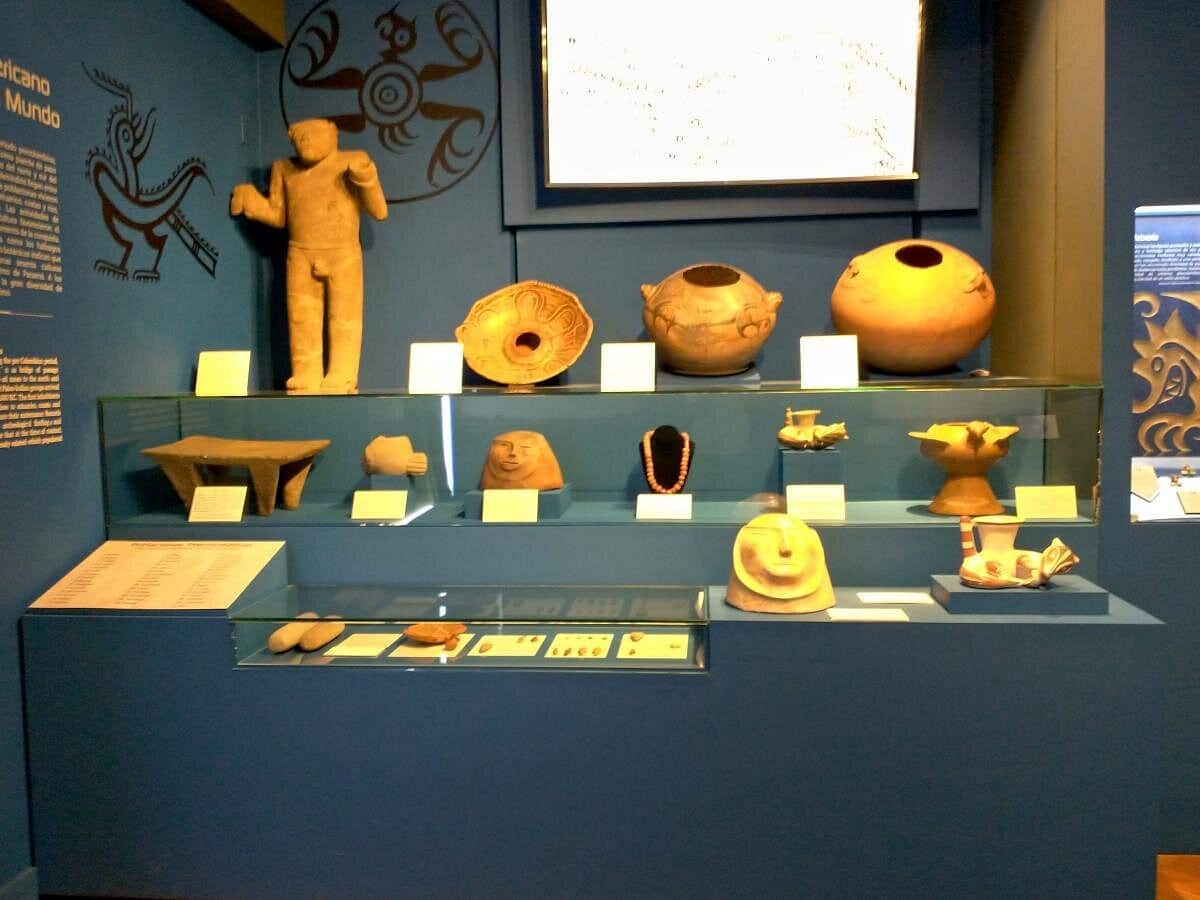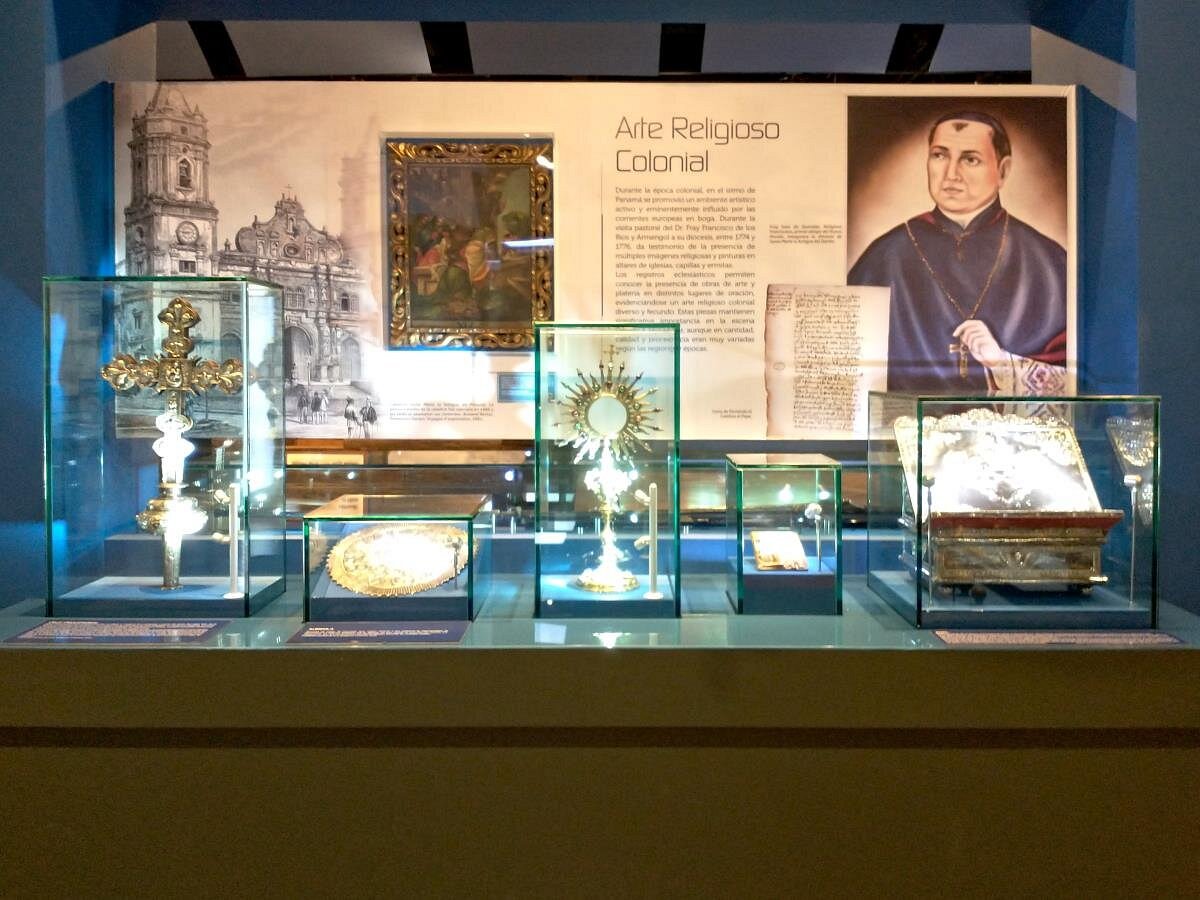The Panama Canal Museum is located in Plaza Catedral (or Plaza de la Independencia) between 5th and 6th streets in Casco Viejo. It was built in a historical building that was originally the Grand Hotel. Its construction was made by the French businessman, George Loew, between 1874 and 1875. Previously, the land was empty as a result of the multiple fires that struck the historic neighborhood.
This hotel in Casco Viejo was the most luxurious in Panama, even more luxurious than the Hotel Central Panama, which was built next door in the same year. It had gas light, full baths, and water supply. The rooms were designed around two courtyards covered by skylights. The balconies were not made together out of wood, like it was commonly done, so that the guests had more privacy. Tiled roof topped the building with five windows looking out onto the plaza. The facade has double height pilasters.
Despite how beautiful and imposing the Grand Hotel was, its history was short and in 1881 the building was sold to Count Ferdinand de Lesseps to install the Universal Company of the French Interoceanic Canal. Most of the building was used for offices, however, an entire floor was designated to accommodate high-ranking employees. All the decisions made by the French during their construction attempt were taken in this place that continues to tell the story.
The building that houses the current Panama Canal Museum was where the canal treaties were signed so that the Americans would continue the construction. The building was used by the United States Canal Commission for 4 years until they moved to Balboa in 1910. In 1915 this building was sold to the Panamanian government to be used as public offices. It was the seat of the Ministry of Education and the Post and Telegraph office. They closed the internal courtyards to add more offices and changed the facade. Over the years, the building deteriorated, like most of Casco Viejo.

The idea of creating a museum dates back to the 1980s. Finally, in 1996 the Board of Trustees of the Interoceanic Canal Museum was created. The restoration work began immediately and the first stage was inaugurated in 1997 as part of the Universal Canal Congress. The restoration of the Panama Canal Museum took six years. They recovered the facade and patios, but the interior spaces were modernized. The old kitchen of the Grand Hotel was converted into an auditorium.
Visit the Panama Canal Museum
This museum in Casco Viejo is managed by a non-profit association, whose mission is to acquire, preserve, investigate, interpret, disseminate and expose the testimonies of the history of Panama and its Canal. The Panama Canal Museum was the first non-US institution affiliated with the Smithsonian Institution. This institution has a strong presence in Panama and carries out scientific research work in different parts of the country, including Barro Colorado Island in the Panama Canal.


Visiting the Panama Canal Museum takes between half an hour to two hours. It opens Tuesday through Sunday from 9 a.m. to 5 p.m. but the last entry is at 4:15 p.m. The museum is closed on Mondays. Entry fees for nationals and residents are different than for foreigners. Sundays provide free entry for nationals and residents between 9 a.m. until noon. People with disabilities can visit the museum, since it has facilities to receive and attend including the provision of wheelchairs, elevators and access ramps. Those who want to coordinate a guided tour must book in advance.
Photography is not allowed inside the Panama Canal Museum. They have ten rooms with permanent exhibits that are exposed in chronological order, providing testimonies of the history of the interoceanic route through the isthmus and then the construction of the Panama Canal. This museum is an excellent complement to the museum that is located in the Miraflores Locks.
The construction of the Canal was carried out between 1904-1914 and the permanent exhibition pays tribute to engineers and workers. People who visit can see how daily life was like in the Canal Zone (exclusive strip for Americans on both sides of the Panama Canal). Later the Canal was managed by the Americans between 1914-1979 causing conflicts between both countries. Finally, in 1977 the Torrijos-Carter Treaties (the museum has the original treaty) were signed, returning the Panama Canal to the Panamanian state on December 31, 1999.
In addition, the Panama Canal Museum has temporary exhibits that vary every year. Topics include culture, art, architecture, history, and environmental conservation. Check their website to find information on current exhibitions and events.


Veda o Phillips says
Does the Museum have photos or information of British West Indian Living in Panama?
Estate of Barbadians
What is the price per person?